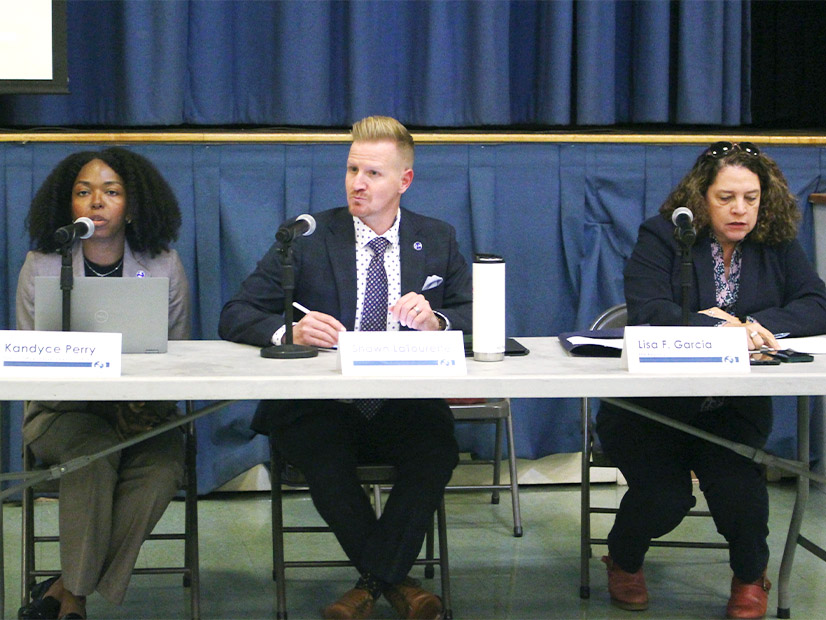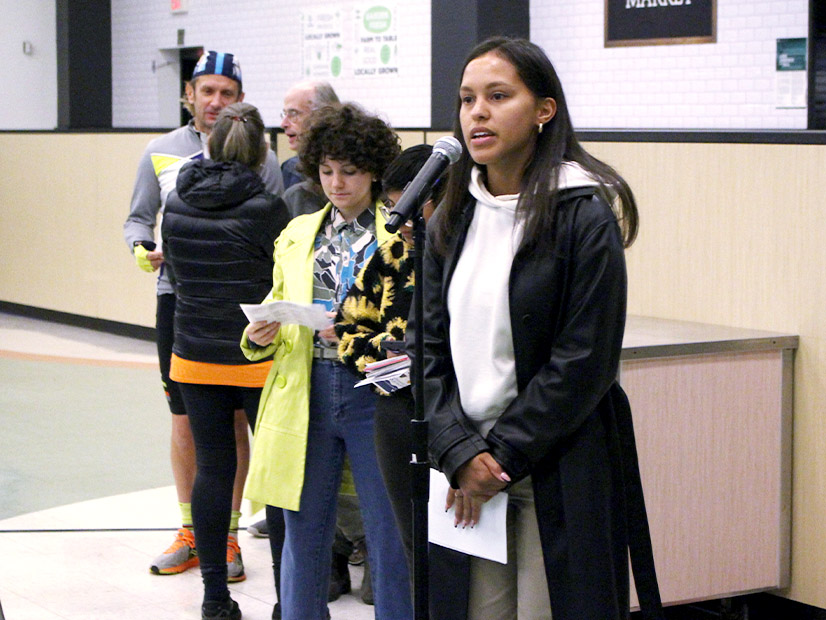
New Jersey’s mass transit agency has abandoned a more-than-$500 million plan to build a gas-fueled emergency resiliency generator amid sustained opposition from environmental groups.
NJ TRANSIT, which runs 12 commuter rail lines linking the state with New York and Philadelphia, said the plan — known as TransitGrid Central Facility — was “not financially feasible.” The agency said it would take the $503 million in federal grants designated for the plant and use the money for other projects, including a new bridge, upgrading of a rail yard and expanding a rail terminal.
The transit agency walkback comes after a year in which the New Jersey Department of Environmental Protection (DEP) in April put in place the final rules for a tough new environmental justice law and held a series of “public engagement” sessions around the state to solicit residents’ concerns about environmental issues.
NJ TRANSIT proposed the 140-MW gas generator and microgrid in Kearny, N.J., after Superstorm Sandy in October 2012 caused widespread and prolonged power outages that severely affected rail service for nearly a week. Despite the agency’s statements the generator would be used for only resilience, opponents for years have argued the state shouldn’t be creating new gas plants as it strives to cut carbon emissions and rely on renewable energy.
“While the TransitGrid procurement process provided valuable knowledge for the future, it showed the funding would be better used to protect these other critical points around the state,” NJ TRANSIT CEO Kevin S. Corbett said in a release Jan. 26 that announced the shift in funding away from the project.
The release said “all of the these affected projects within the Sandy Resilience program are critical pieces of rail infrastructure, including bridges, safe haven storage yards and infrastructure located directly on waterfront properties bearing the brunt of past and future storm events.”
The release added that because the agency proposed the project, “multiple improvements to the affected power grid have been enacted that have functionally made the MCF as envisioned at that time much less necessary than other critical resiliency projects.” In particular, PSE&G has made “significant investments in power grid resiliency under a program called “Energy Strong” throughout the region that has greatly increased power reliability,” the release said.
Anjuli Ramos-Busot, director of the New Jersey Sierra Club, welcomed the agency’s reversal on the “harmful project,” saying her organization had said for years that it’s not financially viable.
“This decision recognizes that gas is not the future for New Jersey and [we] hope that we can continue to move in the right direction toward renewable energy alternatives, battery storage and incorporating climate resilience into everything that we do,” she said. “This decision is a win for the local communities who are overburdened with air pollution, particularly Kearny.”
Providing Storm Resiliency
The Department of Environmental Protection outreach effort comes amid a realization among government officials, planners and developers in New Jersey and elsewhere that community outreach and securing local buy in are key to implementing energy projects and ensuring they advance smoothly.
New Jersey until late last year had six planned gas generating plants, and the Kearny plant was one of three such facilities in North Jersey that for years have drawn particularly vigorous opposition because of their proposed locations in overburdened communities. Only one of the three North Jersey plants now remains on the drawing board.
On Oct. 11, developer Competitive Power Ventures (CPV) withdrew its plans for a 630-MW gas-fired generating plant under development in the Keasbey section of Woodbridge, which local residents opposed. CPV said after it abandoned the gas-fired plant, which would have been the company’s second in that township, that the plant was no longer feasible because market conditions had changed. (See Electric vs. Gas Skirmish Rising in NJ.)
Superstorm Sandy stimulated the development of the third controversial gas plant by the Passaic Valley Sewerage Commission (PVSC), which describes itself as the fifth-largest publicly owned wastewater treatment facility in the U.S. The facility lost power for three days after the 2012 storm, resulting in 840 million gallons of raw sewage pouring into the Passaic River and New York Harbor.
Newark-based PVSC wants to build a $600 million “integrated natural disaster resiliency project” that would serve as a standby power generation facility. The plant would include three 24-MW combustion turbine generators and two 2-MW natural gas-fueled generators.
Early on, PVSC also planned for the plant to provide “peak load management” service to PSE&G’s grid when it came under heavy load demand. But the agency withdrew that plan in June 2021 in the face of public opposition. Activists have urged the PVSC to consider powering the resiliency project with renewable energy. But the agency has said gas would be a better option, although the project website says that “doesn’t mean that renewable energy and alternative fuel sources aren’t an option down the road.”
Public Concern
Opposition to the three projects has surfaced frequently at the DEP’s public engagement meetings, and the issue was highlighted by a speaker at an Oct. 17 meeting in Hudson County, which includes Kearny, the site of NJ TRANSIT’s now-abandoned project. The series of meetings is supported by the federal EPA’s Region 2 office.
Elizabeth Ndoye, a Hoboken, N.J., resident and a member of Don’t Gas The Meadowlands, a group that opposes the development of fossil fuel generators, gave the DEP’s October meeting a succinct snapshot of how she feels climate change has impacted her life.
“I am a 75-year-old mother who will never be a grandmother,” Ndoye told the meeting in Union City, N.J. “Because my daughter-in-law refuses to have grandchildren because we are living in a time of climate crisis. So I am being robbed of the natural joy of most women on this planet.”
As a dedicated environmentalist, she said, she takes pride in CPV’s abandonment of plans to create a gas-fueled plant in Central New Jersey.
“We stopped it in Woodbridge,” she said, and concluded her comments by saying New Jersey Gov. Phil Murphy (D) must “stop these horrible carbon-based dirty fossil-fuel projects.”
Confronting Historic Injustice
In New Jersey, concern that communities were not being heard in decisions over environmental issues led to the enactment of the state’s environmental justice law, which took effect in April with the adoption of the final rules. On signing the law in September 2020, Murphy called it a “historic step” that made the state “home to the strongest environmental justice law in the nation.”
The law requires the DEP to evaluate environmental and public health impacts of certain facilities on overburdened communities (OBCs) when they seek permits. The DEP says it makes New Jersey the first state able to “issue denials for new facilities that cannot avoid disproportionate impacts on OBCs or serve compelling public interest.”
At the heart of the law, according to the DEP, is the legislature’s belief that “historically, New Jersey’s low-income communities and communities of color have been subject to a disproportionately high number of environmental and public health stressors” stemming from the “numerous industrial, commercial and governmental facilities” placed in those communities.
The new environmental justice law means that while the DEP in the past looked at the pollution impact of potential facilities over wide geographic areas, the state also now must look at the local impact and how it affects “a community’s fundamental right to live, work, learn and recreate in a clean and healthy environment,” the DEP says.
Applicants seeking environmental permits for certain pollution-generating facilities must follow new procedures that include identifying environmental and public health stressors from the proposed facility. Applicants also must ensure that meaningful public participation by members of the host community takes place.
The law also empowers the DEP to take into account those stressors and study the concentration of facilities in a given area.
High Density Environmental Impact
Kandyce Perry, director of the office of environmental justice, opened the Union City meeting by saying that though the meeting was part of an ongoing public input solicitation process, the area around the meeting was distinct.
“Here in Hudson County, the densest county in the state, which is already the densest state in the country, communities are contending with compacted neighborhoods that abut against industry, traffic congestion and historic brownfield sites,” she said.
“As our climate gets warmer, the most vulnerable of our residents within Hudson County will be hit hard,” she said. “And this is why it is so important for government to hear directly from those of you who are most impacted by these experiences.”


